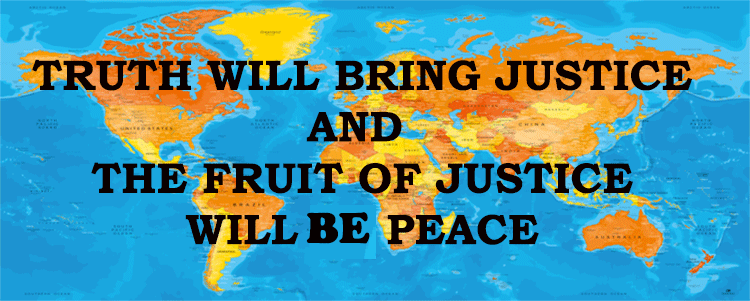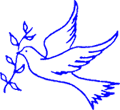 |
IX
.
HENRY'S SETTLEMENT
AT SAGRES AND FIRST DISCOVERIES. 1418-28.
Whatever the
Prince owed to his stay at Ceuta beyond the general suggestion and
encouragement to take up a life-profession of discovery, it was at any rate put
into practice on his second and last return (1418). From that time to the end
of his life he became a recluse from the Court life of Lisbon, though he soon
gathered round himself a rival Court, of science and seamanship.
The old Sacred
Cape of the Romans, then called Sagres, now the Cape
St. Vincent of Nelson and modern maps, was his chosen home for the next forty
years, though he seems to have passed a good deal of his time in his port of
Lagos, close by.
In 1419 King John
made him Governor for life of the Algarves (the
southern province of Portugal) and the new governor at once began to rebuild
and enlarge the old naval arsenal, in the neck of the Cape, into a settlement
that soon became the "Prince's Town." In Lagos, his ships were built
and manned; and there, and in Sagres itself, all the
schemes of discovery were thought out, the maps and instruments corrected, and
the accounts of past and present travellers compared
by the Prince himself. His results then passed into the instructions of his
captains and the equipment of his caravels. The Sacred Cape, which he now colonised, was at any rate a good centre for his work of ocean voyaging. Here, with the Atlantic washing the land on
three sides, he was well on the scene of action. There were buildings on Sagres headland as old as the eleventh century; Greek
geography had made this the starting-point of its shorter and continental
measurements for the length of the habitable world, and the Genoese, whose
policy was to buy up points of vantage on every coast, were eager to plant a
colony there, but Portugal was not ready to become like the Byzantine Empire, a
depot for Italian commerce, and Henry had his own reasons for securing a
desolate promontory.
On this he now
built himself a palace, a chapel, a study, an observatory—the earliest in Portugal—and
a village for his helpers and attendants. “In his wish to gain a prosperous
result for his efforts, the Prince devoted great industry and thought to the
matter, and at great expense procured the aid of one Master Jacome from
Majorca, a man skilled in the art of navigation and in the making of maps and
instruments, and who was sent for, with certain of the Arab and Jewish
mathematicians, to instruct the Portuguese in that science”. So at least, says
De Barros, the Livy of Portugal. At Sagres was thus
founded anew the systematic study of applied science in Christendom; it was
better than the work of the old Greek University at Alexandria with which it
has been compared, because it was essentially practical. From it “our sailors”,
says Pedro Nunes, “went out well taught and provided with instruments and rules
which all map-makers should know”. We would gladly know more of Henry’s
scientific work; a good many legends have grown up about it, and even his
foundation of the Chair of Mathematics in the University of Lisbon or Coimbra,
our best evidence of the unrecorded work of his school, has been doubted by
some modern critics, even by the national historian, Alexander Herculano. But to Prince Henry's study and science two
great improvements on this side may be traced: first in the art of map-making,
secondly in the building of caravels and ocean craft.
The great Venetian
map of Fra Mauro of the Camaldolese convent of
Murano, finished in 1459, one year before the Navigator's death, is evidence
for the one; Cadamosto’s words, as a practical
seaman, of Italian birth, in Henry'’ service, that the “caravels of Portugal
were the best sailing ships afloat”, may be proof sufficient of the other.
On both these
lines, Henry took up the results of Italians and worked towards success with
their aid. As Columbus and the Cabots and Verazzano in later times represented the intellectual
leadership of Italy to other nations—Spain, England, and France; but had to
find their career and resources not in their own commercial republics, but at
the Courts of the new centralised kingdoms of the
West, where a paternal despotism gave the best hope of guiding any popular
movement, social or religious or political or scientific,—so in the earlier
fifteenth century, mariners like Cadamosto and De Nolli, scientific draughtsmen like Fra Mauro and Andrea Bianco, looked from Venice and Genoa to the Court of Sagres and to the service of Prince Henry as their proper
sphere, where they would find the encouragement and reward they sought for at
home and often sought in vain.
Henry’s settlement
on Cape St. Vincent was not long without results. The voyage of his captain,
John de Trasto, to the “fruitful” district of Grand
Canary in 1415 was not in any sense a discovery, as the conquest of John de Béthencourt in 1402 had made these Fortunate islands
perfectly well known, but the finding of Porto Santo and Madeira in 1418-20 was
a real gain. For the Machin story of the English landing in Madeira was a close
secret, which by good fortune passed into the Prince's keeping, but not beyond,
so that as far as general knowledge went, the Portuguese were now fairly
embarked upon the Sea of Darkness.
First came the
sighting of the Holy Haven in 1418. In this year, says Azurara,
two squires of the Prince’s household, named John Gonsalvez Zarco and Tristam Vaz, eager for renown and anxious to serve their lord, had
set out to explore as far as the coast of Guinea, but they were caught by a
storm near Lagos and driven to the island of Porto Santo. This name they gave
themselves “at this very time in their joy at thus escaping the perils of the
tempest”.
Zarco and Vaz returned in triumph to Sagres and reported the new-found island to be well worth a
permanent settlement. Henry, always “generous”, took up the idea with great
interest and sent out Zarco and Vaz with another of his equerries, one Bartholomew Perestrello,
to colonise, with two ships and products for a new
country; corn, honey, the sugar cane from Sicily, the Malvoisie grape from
Crete, even the rabbit from Portugal.
On his first
return voyage Zarco had captured the pilot Morales of
Seville, and from him the Prince had gained certain news of the English landing
in Madeira. So it was with a definite purpose of further discovery that his
captains returned to Porto Santo in 1420, with Morales as their guide. Now, as
before, Zarco appears as chief in command; he had won
himself a name at Ceuta, and if the tradition be true, had just brought in the
first use of ship-artillery; the finding of Porto Santo was mainly credited to
him.
Sailing from Lagos
in June, 1420, he had no sooner reached once again the "Fair Haven"
of his first success, than he was called to note a dark line, like a mark of
distant land, upon the south-west horizon. The colonists he had left on his
earlier visit had watched this day by day till they had made certain of its
being something more than a passing appearance of sea or sky, and Morales was
ready with his suggestion that this was Machin's island. The fog that hung over
this part of the ocean would be natural to a thick and dank woodland like that
on the island of his old adventure.
Zarco resolved to try: After eight days’ rest in Porto Santo he set sail, and,
observing that the fog grew less toward the east of the cloud bank, made for
that point and came upon a low marshy cape, which he called St. Lawrence Head.
Then, creeping round the south coast, he came to the high lands and the forests
of Madeira,—so named here and now, either as De Barros says, “from the thick
woods they found there”, or, in the form of Machico,
from the first discoverer, luckless Robert Machin. For on landing the
Portuguese, guided by Morales, soon found the wooden cross and grave of the
Englishman and his mistress, and it was there that Zarco,
with no human being to dispute his title, “took seizin” of the island in the
name of King John, Prince Henry, and the Order of Christ.
Embarking once
more, he then coasted slowly round from the “River of the Flint” to “Jackdaw
Point”, and the “Chamber of the Wolves”, where his men started a herd of
sea-calves. So he came to the vast plain overgrown with fennel or Funchal,
where the chief town of after days grew up. A party sent inland to explore,
reported that on every side the ocean could be seen from the hills; and Zarco, after taking in some specimens of the native wood
and plants and birds at Funchal, put back in the last days of August to
Portugal.
He was splendidly
received at Court, made a count—"Count of the Chamber of the Wolves”,—and
granted the command of the island for his own life. A little later, the
commandership was made hereditary in his family. Tristam Vaz, the second in the Prince’s commission, was
rewarded too: the northern half of Madeira was given him as a captaincy, and in
1425 Henry began to colonise in form. Zarco, as early as May, 1421, had returned with wife and
children and attendants, and begun to build the “port of Machico”,
and the “city of Funchal”, but this did not become a state affair until four
years more had gone by.
But from the
first, the island, by its export of wood and dragon's blood and wheat, began to
reward the trouble of discovery and settlement. Sugar and wine were brought to
perfection in later years, after the great “Seven years’ fire” had burnt down
the forests and enriched the soil of Madeira. It was soon after Zarco’s return to Funchal that he first set fire to the
woods behind the fennel fields of the coast, to clear himself a way through the
undergrowth into the heart of the island; the fire blazed and smouldered till it had taken well hold of the entire mass
of timber that covered the upper country, nothing in the feeble resources of
the first settlers could stop it, and Madeira lighted the ships of Henry on
their way to the south, like a volcano, till 1428. This was at least the common
story as told in Portugal, and it was often joined
with another—of the rabbit plague, which ate up all the green stuff of the
island in the first struggling years of Zarco’s settlement, and so prevented the export of anything but timber. So much of this
was brought into Portugal that Henry's lifetime is a landmark in the domestic
architecture of Spain, and from the trade of the Wood Island is derived the
lofty style of building that now began to replace the more modest fashion of
the Arabs.
A charter of
Henry's, dated 1430, ten years after the rediscovery of Madeira, and reciting
the names of some of the first settlers, and his bequest of the island, or
rather of its"spiritualties, to the Order of
Christ on September 18, 1460, just before his death, are the chief links
between this colony and the home country in the next generation—but in the
history of institutions there are few more curious facts than the insistence of
the Prince on a census for his little "Nation." From the first, the
family registers of the colonists were carefully kept, and from these we see
something of the wonder of men who were beginning human life, as it were, in a
new land. The first children born in Madeira—a son and daughter of Ayres
Ferreira, one of Zarco’s comrades—were christened
Adam and Eve.
|
 |








